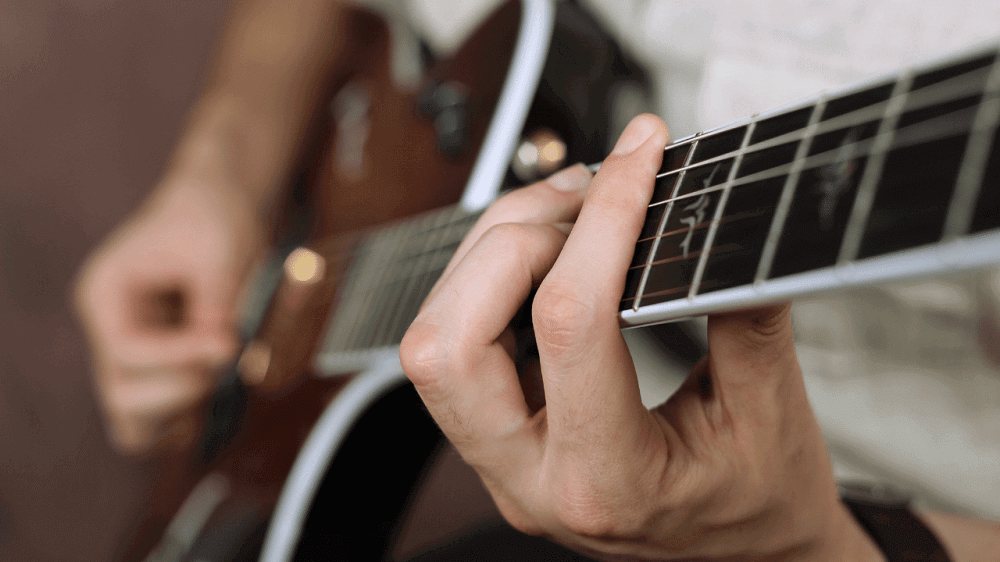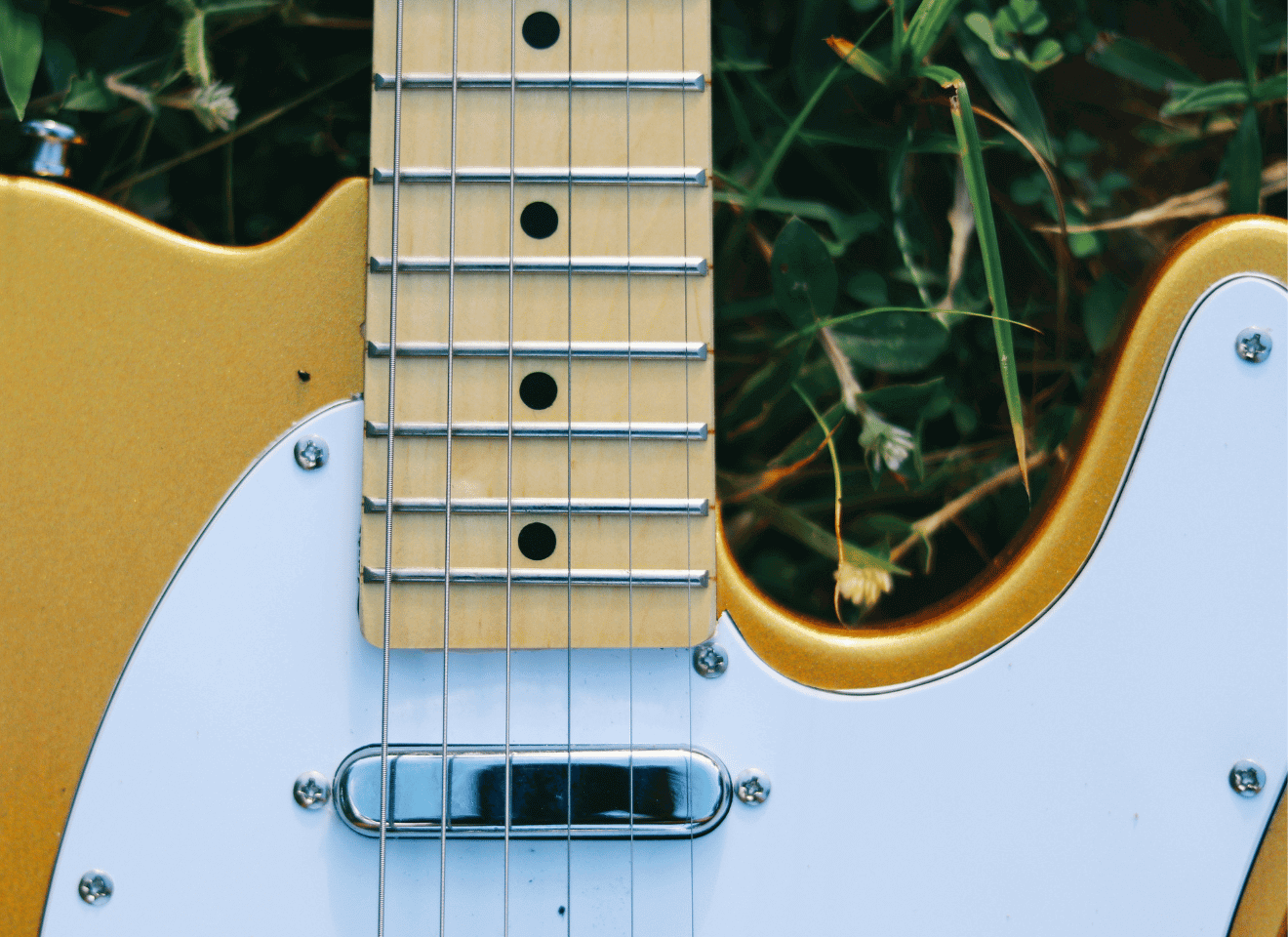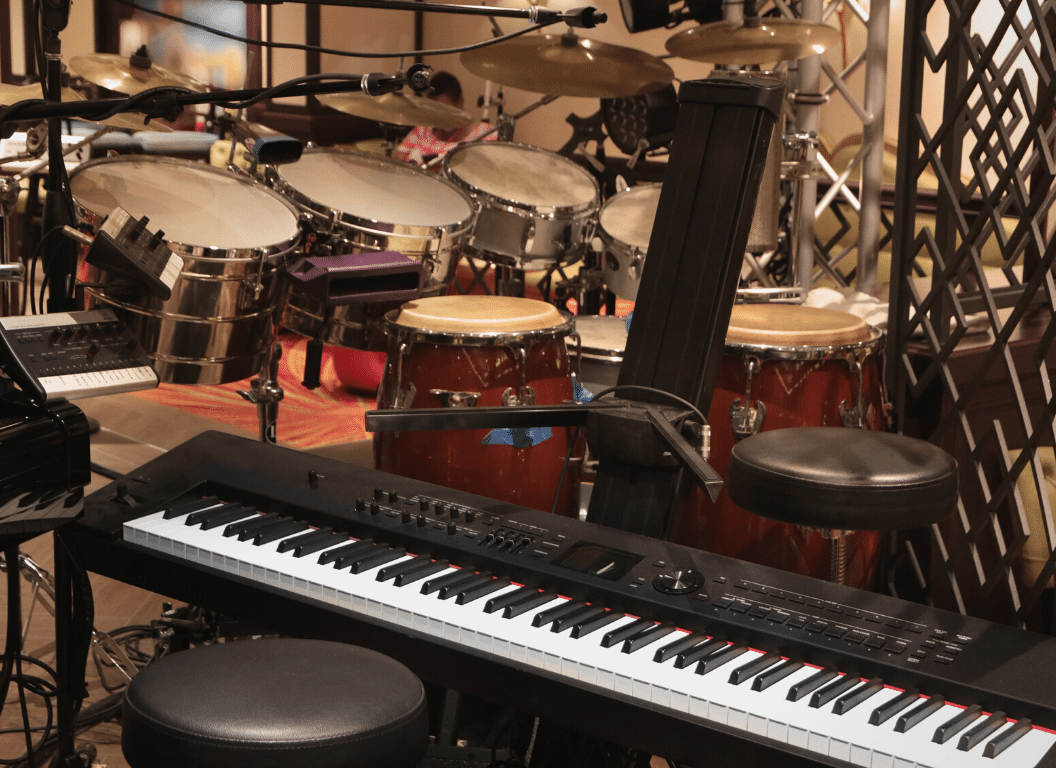What are the best guitar sad chord progressions?
The process of writing a sad chord progression that’ll move your listeners to tears is not an easy thing to do.
Some people just take a few minor chords in a particular key and get it over with.
On the other hand, those with some skill and knowledge can create sounds that aside from just sounding sad, will also allow all emotions to freely be expressed.
If this sounds too complicated, don’t worry, because we’ll help you by providing you with the exact chord progressions and tips on how to make them even more unique.
All you have to do is grab your guitar and play!
Table of Contents
- Sad Guitar Chord Progressions
- F – Dm7 – F/A – Bb
- A – C#m/G# – F#m – D
- Eb – Bb/D – Cm7 – Bb/D
- G – Em7 – Cmaj7 – C6/D
- Am – (C – Dsus2)
- A – C#m – B – F#m
- Fm – Eb – Bb
- E – A – E/G# – (A – D/A) – A
- A – Asus4 – Dmaj9/F# – D – E6 – Dsus2 – A – Dsus2
- Am – C – G – Em
- G – Am – D7 – G – D7
- F#5 – D5
- Am – (G – D)
- A – E/G# – F#m – F#m/E – D/F# – E7sus4 – E7 – A
- F – C/E – Dm7 – (F – C9sus4)
- (Bm7 – A/B)x2 – (D/E – E)x3 – D/E
- F#m – Asus2 – E5 – Dmaj13
- D – Bm7 – F#m
- D – A/C# – Am6/C – B7 – Em – Em7/D – A7/C# – D – D7 – G – Em7b5 – D/A – A7sus4 – G6/D – D5
- (A – A7/G) – F#m7 – Em – C# – A – F#m7 – Em – C – (C# – F#7)
- C – Cmaj7 – Cadd9 – C – Asus2 – Asus4 – Am – Asus2 – Cadd9
- What is the saddest key?
- How to write an emotional melody?
- Download link
Sad Guitar Chord Progressions
Let’s take a look at some of the most popular sad chord progressions out there:
F – Dm7 – F/A – Bb
Sometimes all you need to do to create a sad chord progression is just use a major key signature and a single minor chord.
The chord progression outlined above does exactly that.
Also by being so simple, it allows us, guitarists, to add our own melodies to make it even more emotional.
On the other hand, a chord type that you may never use often enough is the first inversion of a major chord, which in this case is F/A, as seen below.

This chord is in my opinion the most important one of this chord progression since it allows the melody to go back to F major in a more natural and pleasing way.
If you’re wondering which song uses these chords, you can hear them very clearly on Adele’s “Easy On Me.”
A – C#m/G# – F#m – D
Many of the most popular chord progressions you hear nowadays use some variation of the I to IV change.
It’s for a good reason as the I chord is the relative dominant chord to the IV in a major key.
In the key of A major, this chord progression will look something like this:

Although this is a progression firmly rooted in a major key, the descending bass line has a feeling of loss and regret.
If you’re interested in having this same effect, be conscious of the bass notes in your chord progression and how you use them.
This progression is also from one of Adele’s songs, in this case from her hit “Someone Like You.”
Eb – Bb/D – Cm7 – Bb/D
Another great example of how you don’t have to use a lot of minor chords in order to create a sad chord progression.
This progression uses just one and it also implements the same chord (Bb/D) twice to end the progression and go back to Eb.
In the key of Eb major, this chord progression would be played like this:

The melody and vocals that you add to on top of these chords will ultimately determine the mood and tone that listeners will receive.
In other words, you can make it very sad or you can also make it extremely motivating and inspiring.
This progression is very similar to Fleetwood Mac’s “Landslide.”
G – Em7 – Cmaj7 – C6/D
We’re continuing to bust the myth that writing in minor keys is the only way to compose sad chord progressions.
I won’t talk a lot about melodies in this article, but again, it’s very important to stay aware of how it influences the feeling and state of your underlying sequence of chords.
In G Major, this chord progression can be played like this:

A reason that this one isn’t used as much as others are is that lots of songwriters like to use chords that don’t sound as closely related as Em7 and Cmaj7 do.
When you break down the notes of these chords, they only differ by one or two separate notes.
This progression is used by Lady Gaga in her song called “I’ll Never Love Again” from the A Star Is Born soundtrack.
Am – (C – Dsus2)
Finally, we’re going to talk about a chord progression that’s a lot simpler.
This is another variation of the I to IV chord change, except this time we’re throwing in the III to increase the tension going towards this change.

When parentheses are used around two or more chords, that means that the song is calling for you to play those two chords in a single bar.
This chord progression appears in one of the ultimate songs about resignation, and it’s from Johnny Cash’s cover of Nine Inch Nails “Hurt.”
A – C#m – B – F#m
This progression is a little different because it doesn’t start out on the I chord this time.
Anytime you see a progression that doesn’t start on the I chord, it is probably a modal progression.
In this case, we’re using the key of E major, and the progression is A – C#m – B – F#m.

When you start a progression on the IV chord and stay in the major key of the I chord, you’ll be using the Lydian mode.
This mode is great to use when you want to create a dreamier soundscape as the IV chord is a maj7 chord.
This progression is used in “Summertime Sadness” by Lana Del Rey.
Fm – Eb – Bb
Even though a lot of chord progressions have been longer, there’s no denying the power of a simple 3 chord progression.
This one is slightly more used than the others, but not as much to express sadness.

A lot of times, the key of the song is enough to send the listener into fits of despair and anguish over lost love.
Just choose a key like C minor, Bb minor, or G# minor and you’re halfway there.
A typical use of this chord progression comes from “Blue Jeans” by Lana Del Rey.
E – A – E/G# – (A – D/A) – A
Again, getting anything from this example may be challenging if you’re not familiar with slash/inverted chords.
Why do so many of our progressions have these different-looking chords?
You see, outside of the guitar, there is a whole world of harmony and chord progressions that have not been touched upon as much. It’s all due to the composition of these chords.
For this example, let’s set it in E major again, which will be E – A – E/G# – (A – D/A) – A.

You may recognize this as the verse/main chord progression of Elton John’s “Candle In The Wind.”
The chord E/G# will not have an E note as the bass note. Instead, you’ll have G#, B, E, and then some of the other chord tones depending on the voicing you use.
A – Asus4 – Dmaj9/F# – D – E6 – Dsus2 – A – Dsus2
To continue on the discussion of slash chords, let’s look at this one based in A major:
A – (A – Asus4) – Dmaj9/F# – (D – E6) – Dsus2 – A – Dsus2
The maj9 interval on D corresponds to an E note on top of a maj7 interval (C#).

So it’s got two common tones with the A chord, and it uses a great bass note out of F#.
What’s important to understand though is that, by having a different bass note, you get a different set of intervals together.
Compare D and D/F#:
- D = D – A – D – F# (when played as the common open chord XX0232)
- D/F# = F# – D – A – D (when played as 2X023X)
You may recognize these chords in “Fake Plastic Trees” by Radiohead.
Am – C – G – Em
The ii- IV – I – vi is another modal progression, but we’re using the Dorian mode this time.
Using the Dorian mode is actually a great way of making jazz progressions, in this case though, it’s all hard rock/metal.

Remember that in order to create a modal progression, the progression should start and end on a chord in a major key other than the I.
These chords famously make up the main riff of Metallica’s “Fade To Black.”
G – Am – D7 – G – D7
This is a great progression to have in your arsenal if you’re interested in writing country songs or anything more than just a few regular chords.
If you have never worked with a seventh chord, this is your opportunity to do so in a very unusual and interesting way.
When we’re in the key of G major, this progression will come out to be:

Notice again that a chord progression doesn’t need lots of minor chords to sound sad.
This progression comes from the great song by George Jones called “He Stopped Loving Her Today.”
A lot of the power of this chord progression comes from the melody that starts high and then descends into a lower register.
F#5 – D5
This will be the simplest one we come across in this article so far as it only uses two chords: i and VI.
In the key of F# minor this will give us the following chord structure:

You may recognize this chord progression as the basis for the last song on Nirvana’s Nevermind album, called “Something In The Way.”
Many minor chord progressions will have a natural tendency to go to VII and VI because these are more stable chords.
They also appeal to our ear’s tendency to want to head back to the V chord, however, this lesson is chock full of ways to avoid going directly to the relative V of the key you’re in.
Am – (G – D)
Although we’ve gone through plenty of more difficult musical concepts, there is no shame in just going with a few solid chords to make your progression.
As long as you know the 7 chords available in every major or minor key, you have lots of possibilities for inspiration.
For the ii – I – V in G Major, you’ll get Am – G – D:

If you read our tips about modes in previous sections you’ll know that this is a modal progression and that we’re in Dorian mode.
This chord progression can be heard on Alice In Chain’s “Down In A Hole.”
A – E/G# – F#m – F#m/E – D/F# – E7sus4 – E7 – A
When you play this progression in A major, you’re going to get the famous progression from Eric Clapton’s “Tears In Heaven.”
This progression’s sadness comes from the skillful use of bass notes, particularly the F# note.

Us guitar players are not as adapted to make several bass note changes as other instruments like the piano require you to be.
There is lots of dramatic potential in using the bass register to create counter melodies and just different chords in general.
Notice how Eric Claption uses his left-hand thumb for many of the chords in this progression.
F – C/E – Dm7 – (F – C9sus4)
For another example of great bass note usage, just look at this chord progression taken from Prince’s “Nothing Compares 2 U.”
The E in C/E helps us move the progression downward in a skillful way that doesn’t take us totally down like other progressions we’ve talked about will do.

Another songwriting advice that you should be taking advantage of is to insert 7th chords into your progressions.
Every chord in a major or minor key has a corresponding 7th interval you can use to turn the F into Fmaj7, Dm into Dm7, and C into C7 to name a few examples.
(Bm7 – A/B)x2 – (D/E – E)x3 – D/E
This will be the first of our longer progressions.
Writing longer progressions is not really the hard part, but making a melody that engages the listener long enough to follow along is hard.
If you were to play this in B minor, you’ll get the following progression which corresponds to the one in “Blue” by Joni Mitchell:
(Bm7 – A/B) – (Bm7 – A/B) – D/E – (E – D/E – E) – D/E – (E – D/E)

What makes the process easier though, with writing longer progressions, is to use chords together that are very similar in composition like D/E and Bm7.
F#m – Asus2 – E5 – Dmaj13
This progression is going to satisfy all the heavy metal lovers out there! We’re in a minor progression, and using a III chord going down to VII chord in the same key.
This is something you should use more often as it helps build a stronger chord progression due to VII being a fifth away from III.
In F# minor you’ll get something like the progression from Pantera’s “Cemetery Gates:”

Going from a relative V chord to a relative I, whether in a major or minor key or going outside the key, is one of the most useful ways to build a strong progression.
This is because the perfect 5th interval is the strongest musical interval out there to use to connect notes and thus chords together.
D – Bm7 – F#m
Before we get into the other longer progressions, let’s talk about a very simple one from “Julia” of the Beatle’s White Album:
In the key of D major, this will be D – Bm7 – F#m.

This is a great example of what I talked about a few sections ago with using similar chords together.
You see the D chord has two similar notes to both Bm7 and F#m, which is F# and D or F# and A.
This idea of putting chords with several shared chord tones together is one of the most useful tools I encourage you to take away from this lesson.
It’s also going to be a huge help with the next two progressions that we’re ending our lesson with.
D – A/C# – Am6/C – B7 – Em – Em7/D – A7/C# – D – D7 – G – Em7b5 – D/A – A7sus4 – G6/D – D5
This is a very long chord progression in D major:
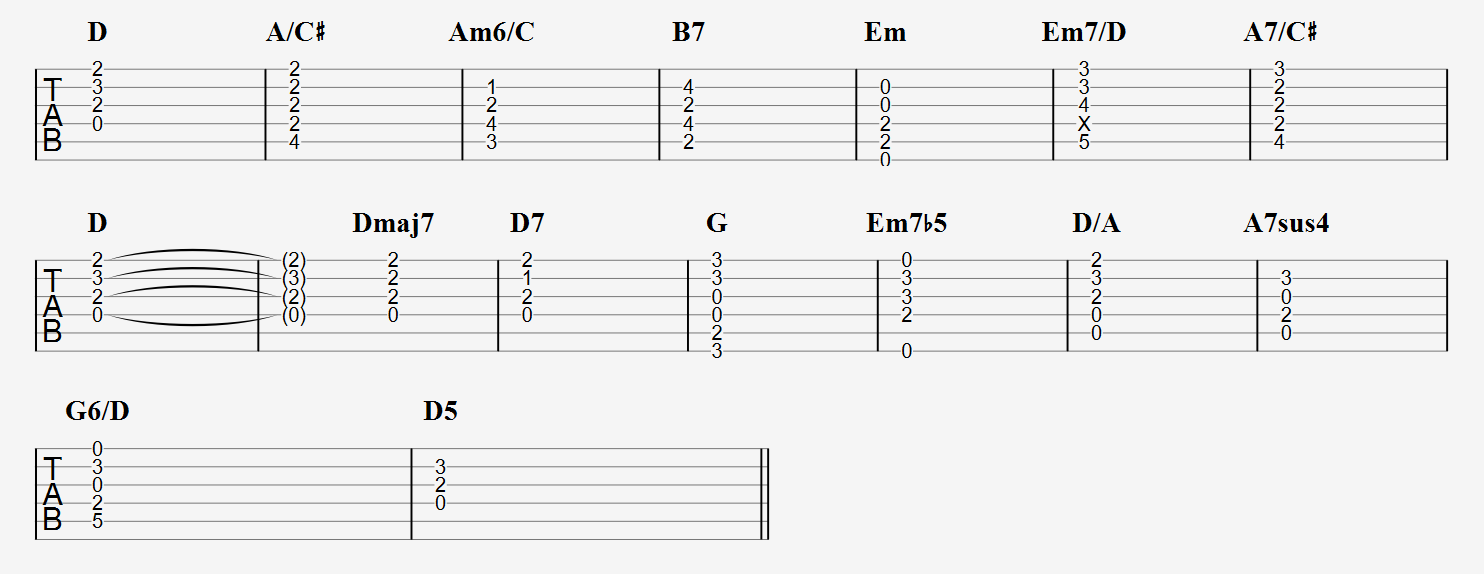
When creating a chord progression like this one, it’s key to remember to do some of the things we’ve been talking about.
That is to reuse chords to keep the progression strong, and to use a V – I chord move wherever you can.
In this example, the ii to V7, VI7 to ii, and I7 to IV work great to achieve the purpose of creating relative V to I chord moves.
Also, notice how often the D chord and note are used!
This example comes from the main progression of “My Way” by Frank Sinatra.
(A – A7/G) – F#m7 – Em – C# – A – F#m7 – Em – C – (C# – F#7)
Classical music is full of sad chord progressions reeking of despair, and we couldn’t help but choose one of the best out there.
This one is long too, but actually has several of the same qualities of the other long progression we just did.
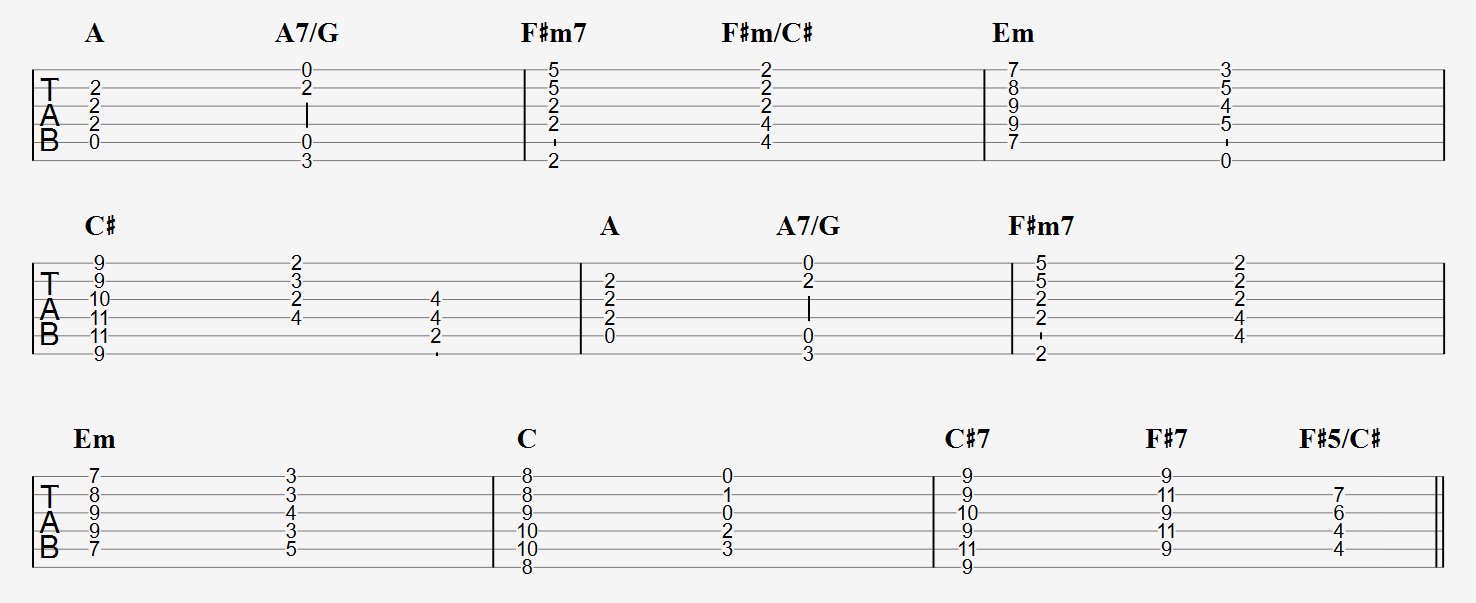
C# is the relative V to F#7, and F#m7 has two chords in common with D, which is the relative I to A and A7.
This information may be a lot but we’re just referring to the V-I relationship that’s used throughout all of this music.
What’s also great about this chord progression is the use of the bII (C chord).
Using a chord that doesn’t belong to the key you’re in is an example of chromatic harmony, which just means that you’re using notes or chords that don’t appear naturally in the key you’re in.
By the way, a similar chord progression can be heard in Tchaikovsky’s main theme in Swan Lake.
Listening to these chords leaves people with a sense of wanting to “come back home” melodically since it sounds like a bridge or a build-up.
This is why oftentimes, it’s more than usual to hear musicians go back to Bm – Em or the appropriate chords depending on the key.

C – Cmaj7 – Cadd9 – C – Asus2 – Asus4 – Am – Asus2 – Cadd9
This chord progression is widely known but full of opportunities to create your own unique versions.
You might recognize this pattern from “Dust in the Wind” by Kansas:

Although using the exact chord changes will inevitably make any song sound exactly the same, what I would encourage you to do is play around with the order of the chords and come up with your own patterns.
The point I want to make is that, nowadays, almost all possible chord progressions have already been used by who knows how many people.
As musicians, is okay to get inspired by other artists to then create and write our own music.
If you’re able to master the ability to put different musical elements together from different songs, then you basically have an unlimited amount of ideas to work with.
What is the saddest key?
There isn’t any music theory behind describing what personally feels sad to certain people.
In other words, the answer to this question is very subjective and really comes down to the composition of the piece and the message that the songwriter is trying to share.
You can write a sad song from a key that sounds “happy” and you can also write a happy song from a key that sounds “sad.”
However, for some reason, if you ask this question to multiple people, or even search for its answer only, you’ll learn that:
Most musicians find the key of D minor as the saddest key.
The reason behind this is again, subjective and general consensus.
Here are some common chord progressions in the key of D natural minor:
| i – iv – VII | Dm – Gm – C |
| i – iv – v | Dm – Gm – Am |
| i – VI – III – VII | Dm – Bb – F – C |
| i – VI – VII | Dm – Bb – C |
| i – iv – V – i | Dm – Gm – A – Dm |
| i – v – VI – VII | Dm – Am – Bb – C |
| i – III – VII – iv | Dm – F – C – Gm |
How to write an emotional melody?
Once again, making an emotional melody is extremely relative and subjective.
Nonetheless, here are some suggestions that you can apply to your songwriting process that will help you compose better emotional melodies:
1. Follow and use notes from the chord progression
If you are a beginner and haven’t really learned to improvise a solo or create a melody on the spot then your best bet is to use notes from the current chord that’s being played.
For example, let’s say that the chord progression is Dm – Gm – A – Dm:

All the notes in these chords are correct when you play them throughout the progression, with some exceptions.
Slash is known to do this in many of his solos, especially on “Sweet Child O’ Mine” and “November Rain.”
He’s always very aware of the chord that’s being played and uses notes from that same chord to either transition to the next one or create a melody in itself.
If you are able to detect the minor third in a chord, then you can use that note as your base.
2. Loop a melody over a certain amount of time
Looping a melody, especially one that already sounds sad, adds a lot of emotion to your songs.
In the context of solos, this is a great way of building some tension and making your listeners feel the despair of the music.
On the other hand, if you’re trying to write the main riff, then make sure you pay attention to the way that it matches and meets the beginning of the loop.
A great example of a loop that perfectly goes back to its first note is found in “Satisfaction” by The Rolling Stones:
3. Play extended and longer notes
There’s something about extending the right note for more time than expected that allows you to share a deeper and meaningful sentiment with your listeners.
When it comes to sad chord progressions and emotional melodies in general, slow and soft is your best option.
The length of any note is solely determined by you and your own intuition and feel when playing your guitar.
Something like this allows for a more personal and intimate connection since it’s another way in which you’re essentially talking to your audience.
4. Use vibratos as much as possible
Using vibratos is another great form of communication between your guitar and other people.
A vibrato, for those of you that might be unaware:
Is a rapid, slight variation in pitch in singing or playing some musical instruments, producing a stronger or richer tone.
In other words, this is the same thing as pressing a note and stretching the appropriate string either up or down multiple times.
The reason vibratos are so emotional is essentially the continued added expression you get from doing it and the slight tension that changing the pitch creates.
You can either play a fast vibrato or a very slow one, this is called the vibrato speed.
In both cases, just make sure that you’re keeping up with the tempo of the song and that you’re doing so in the most natural and particular way.
Don’t overdo it and also be certain that the note that you’re planning on doing the vibrato sounds right or at the very least that it melodically makes sense.
Download link

An avid storyteller and music lover that devotes all his free time to mastering the art of playing guitar. I’ve played acoustic for 6 years, and recently started playing electric guitars. Currently playing an Epiphone SG Special!

